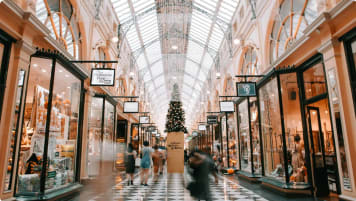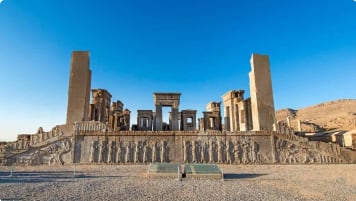Ten Things We Never Knew About London
Article supports time in London, England's capital city. The city has a history back beyond the Romans, and a collection of some of the finest Georgian and Victorian Architecture on an educational small group tours for senior couples and mature solo travellers.
7 Sep 21 · 12 mins read
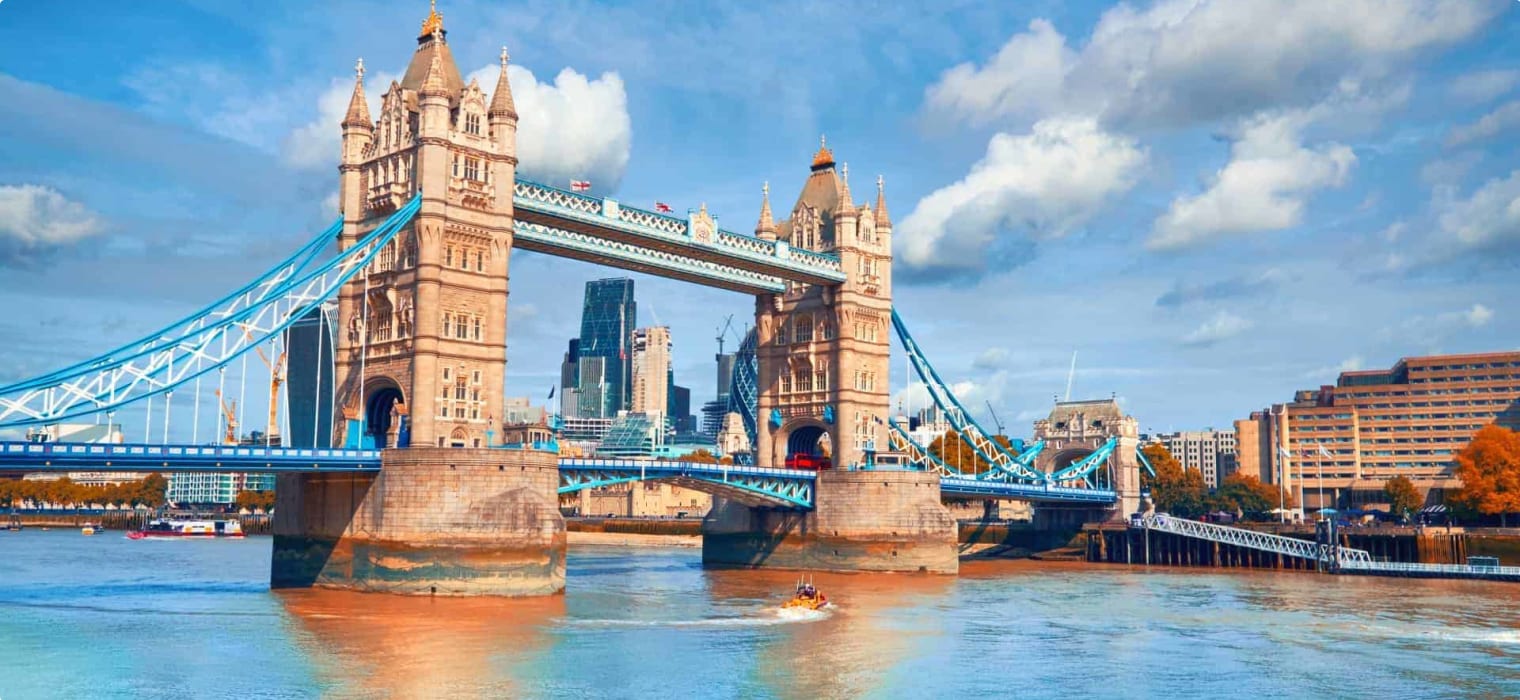
Ten Things We Never Knew About London
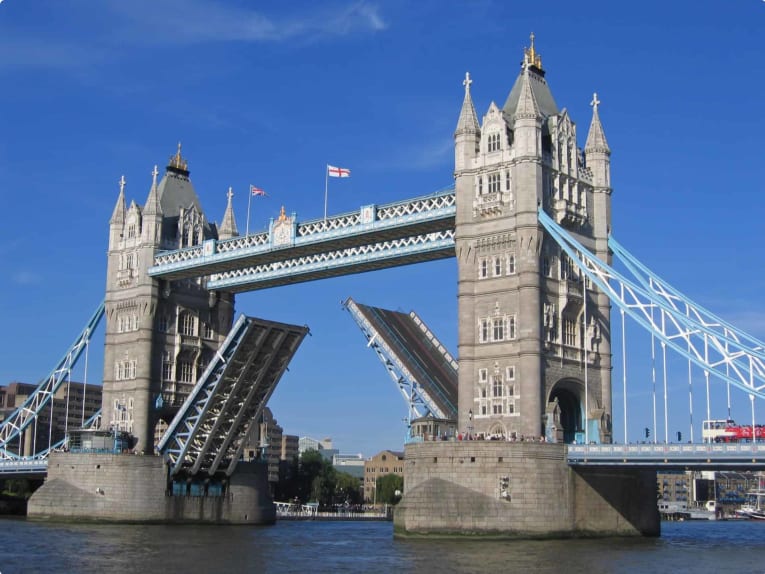
“Why, Sir, you find no man, at all intellectual, who is willing to leave London. No, Sir, when a man is tired of London, he is tired of life; for there is in London all that life can afford” – Samuel Johnson, 1777.
More than two centuries later, most Londoners still agree with Johnson. No matter how long you’ve lived in London or how many times you’ve visited – there is always new places to uncover, people to meet, and historical facts that you didn’t know.
In this article, we’re sharing ten little-known facts about London. Whether you’ve visited London over twenty times, or have never been, we hope that you’ll uncover something that you never knew before.
We urge travellers interested in finding out more facts about London to read Christopher Winn’s I Never Knew That About London, which was used in the writing of this article.
This is part of our collection of England-related articles that we share as backgrounders before you go on an England tour with us, or to simply help you as you firm up your travel plans. All of those articles can be found here.
-
London is home to the tallest isolated stone column in the world.
Located in the City of London is The Monument to the Great Fire of London, better known as ‘the Monument’, built to commemorate the Great Fire of 1666. At 62 metres high, it is the tallest column in the world.

The Monument was designed by Sir Christopher Wren, the architect of St. Paul’s Cathedral, and his friend, Robert Hooke. Wren wished to crown it with a statue of the then-king, Charles II, but the king declined, pointing out that ‘I didn’t start the fire’. Instead, a flaming urn of gilt bronze was placed at the top (Winn, I Never Knew That About London, 3).
The Monument stands of the site of St. Margaret’s, Fish Street, the first church to be burned down by the Great Fire, and is located only 62 metres from where the Great Fire started, at a baker’s shop in Pudding Lane.
Though a rash of suicides in the early 19th century led to the closure of the viewing platform, it has since been re-opened. In 2009, a 360-degree camera was installed at the top. Running 24-hours a day and updated every minute, it provides a record of weather, building, and other activity in the city. Make sure to head to the top for great views of the city.
-
London’s coffee-houses were the world’s first ‘information superhighway‘.
Between Cornhill and Lombard Streets in the City of London there is a maze of narrow streets and allies, created for messengers to flit between the businesses that were based around there. In the 17th and 18th centuries, these laneways were home to dozens of coffee-houses and taverns where merchants, bankers, and traders met to exchange news and ideas. Many London institutions still surviving originated in ideas developed over coffee or wine: Lloyd’s of London (insurance), the London Stock Exchange and the Baltic Stock Exchange. Today, look for plaques in the area, commemorating this important history.

The first coffee-house in London was Pasqua Rosee’s opened by Christopher Bowman and his business partner, Pasqua Rosee, in 1652. Though the cafe burnt down in the Great Fire, it was replaced by the Jamaica Coffee-House, which operates today as the Jamaica Wine-House.
Nearby is the George and Vulture, a pub which has apparently existed since the 12th century in various forms. Jonathan Swift drank here, as did Charles Dickens, who refers to the pub in the Pickwick Papers. In the 18th century, the pub was the haunt of the famous rake Sir Francis Dashwood and his Hellfire Club, which was notorious for its debauchery, mockery of organised religion and (alleged) devil worship. The George and Vulture remains open today, but no longer plays host to any secret societies (that we know of).
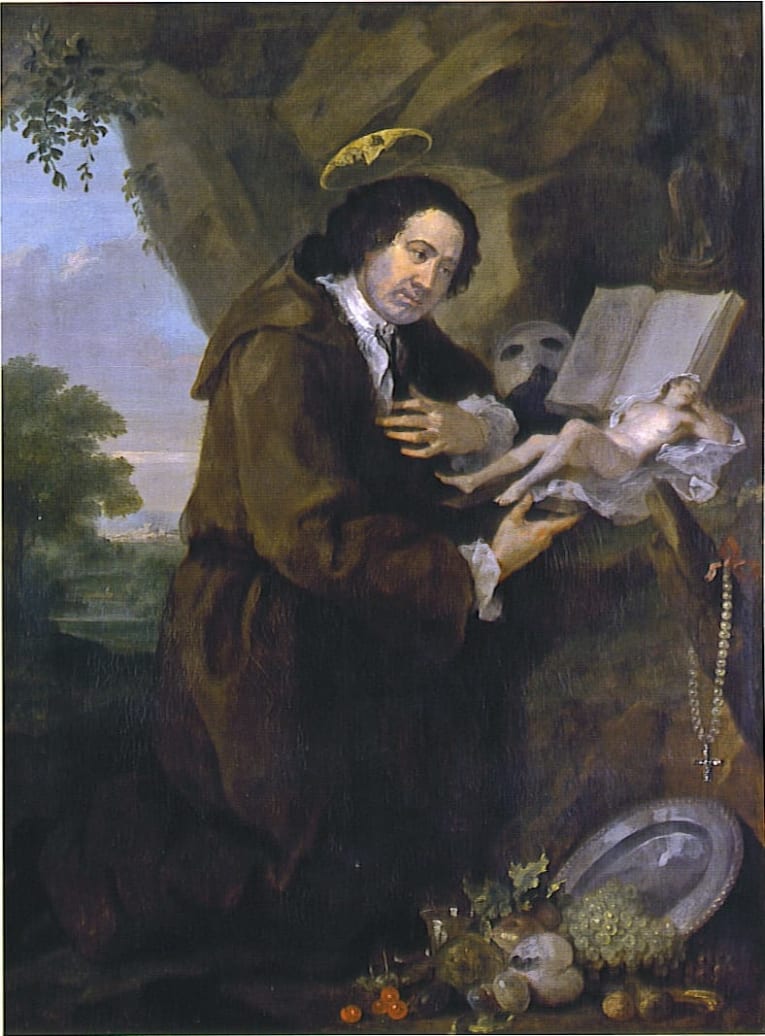
The Jerusalem Coffee-House, on Cowper’s Court, was frequented by the writer Charles Lamb (1775-1834) and the philosopher John Stuart Mill (1806-73), while Garraway’s Coffee House was the first to import tea into Britain.
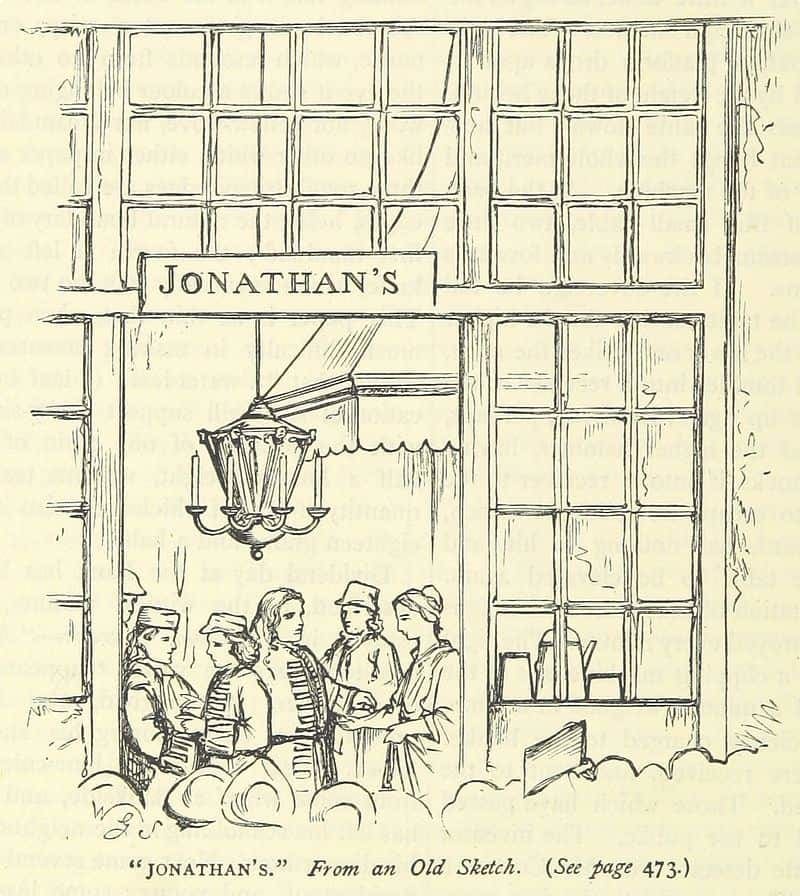
Jonathan’s Coffee House opened up several years later and became a favorite meeting-place for stock dealers expelled from the Royal Exchange for rowdiness. In 1698, the first recorded organised trading in marketable stocks took place at Jonathan’s – giving birth to the London Stock Exchange. Trading at Jonathan’s would also lead to the world’s first major stock market crash – the South Sea Bubble of 1720.
-
St Paul’s is England’s only domed cathedral
The current cathedral at St. Paul’s is the fifth cathedral to stand in its position at the top of Ludgate Hill. The Romans are said to have had a temple here, while the first cathedral, made out of wood, was founded in 604 and dedicated to St. Paul by England’s first Christian king, Ethelbert of Kent. Though rebuilt in stone, this church was burnt down by Vikings in 962. The third Saxon cathedral was destroyed by fire in 1087, and was replaced by the Normans over a 200 year period. The Norman cathedral was the longest and largest in England, and had the second tallest spire (after Lincoln Cathedral, also in England) in the world.
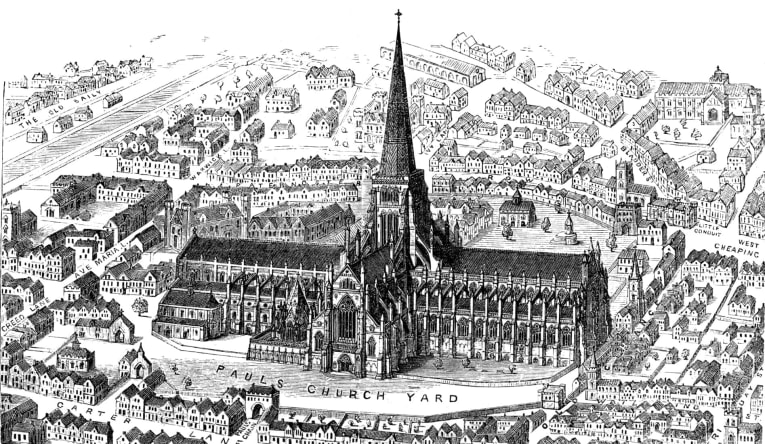
Old St. Paul’s was host to many important moments in British history. John Wycliffe was tried for heresy here in 1377, while Henry V prayed at the High Altar before going to France in 1415. Henry VII’s oldest son, Prince Arthur married Catherine of Aragon here in 1501 – though she would be more famous for being the first wife of his younger brother, King Henry VIII.
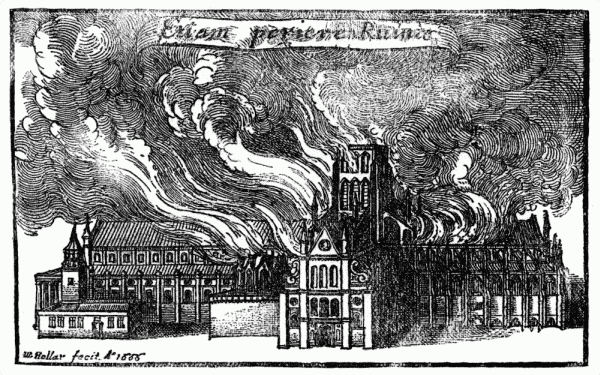
The cathedral was reduced to ashes in the Great Fire of 1666, and Sir Christopher Wren was commissioned to build a new St. Paul’s. The famous dome – the only one in England – would pose an architectural conundrum: if the dome was to be high enough to impress from the outside, it would be too big for the interior. His solution was to build three domes, one inside each other. A small inner dome is decorated with frescoes to be viewed from within the church. The outer dome is the third largest church dome in the world, after Santa Maria del Fiore in Florence and St Peter’s in Rome.
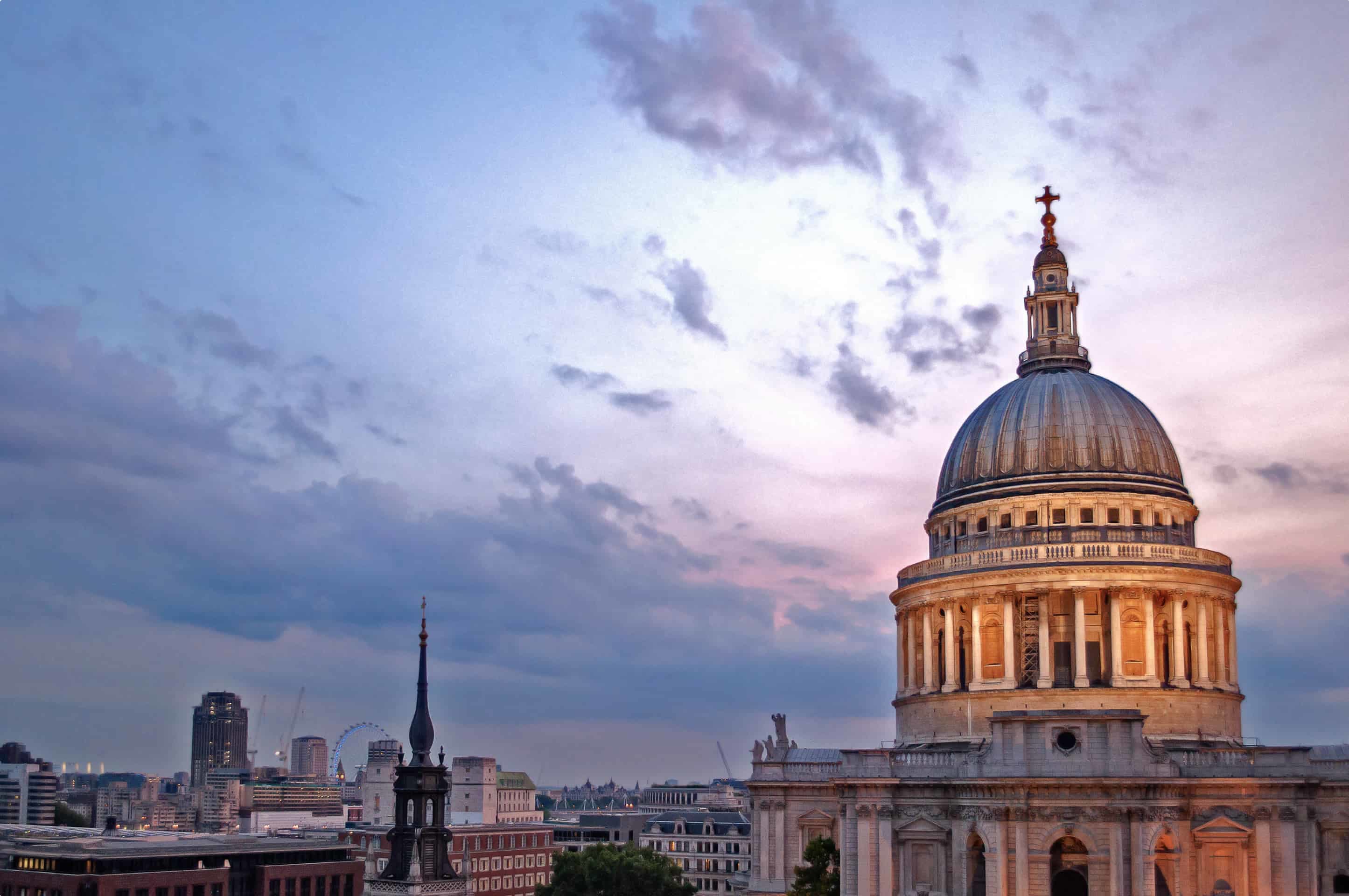
St Paul’s Cathedral is also the largest crypt in Europe, home to figures from British history including Lord Nelson, The Duke of Wellington, and the ‘Painter’s Corner’, where Sir John Millais, J.M.W. Turner, and Sir Joshua Reynolds are buried, among other artistic luminaries.
Like its predecessor, St. Paul’s Cathedral has played host to important moments in British history, including the state funerals of Lord Nelson, the Duke of Wellington and Winston Churchill; the Jubilee celebrations of Queen Victoria and Queen Elizabeth II; and the wedding of Charles, Prince of Wales, to Diana Spencer.
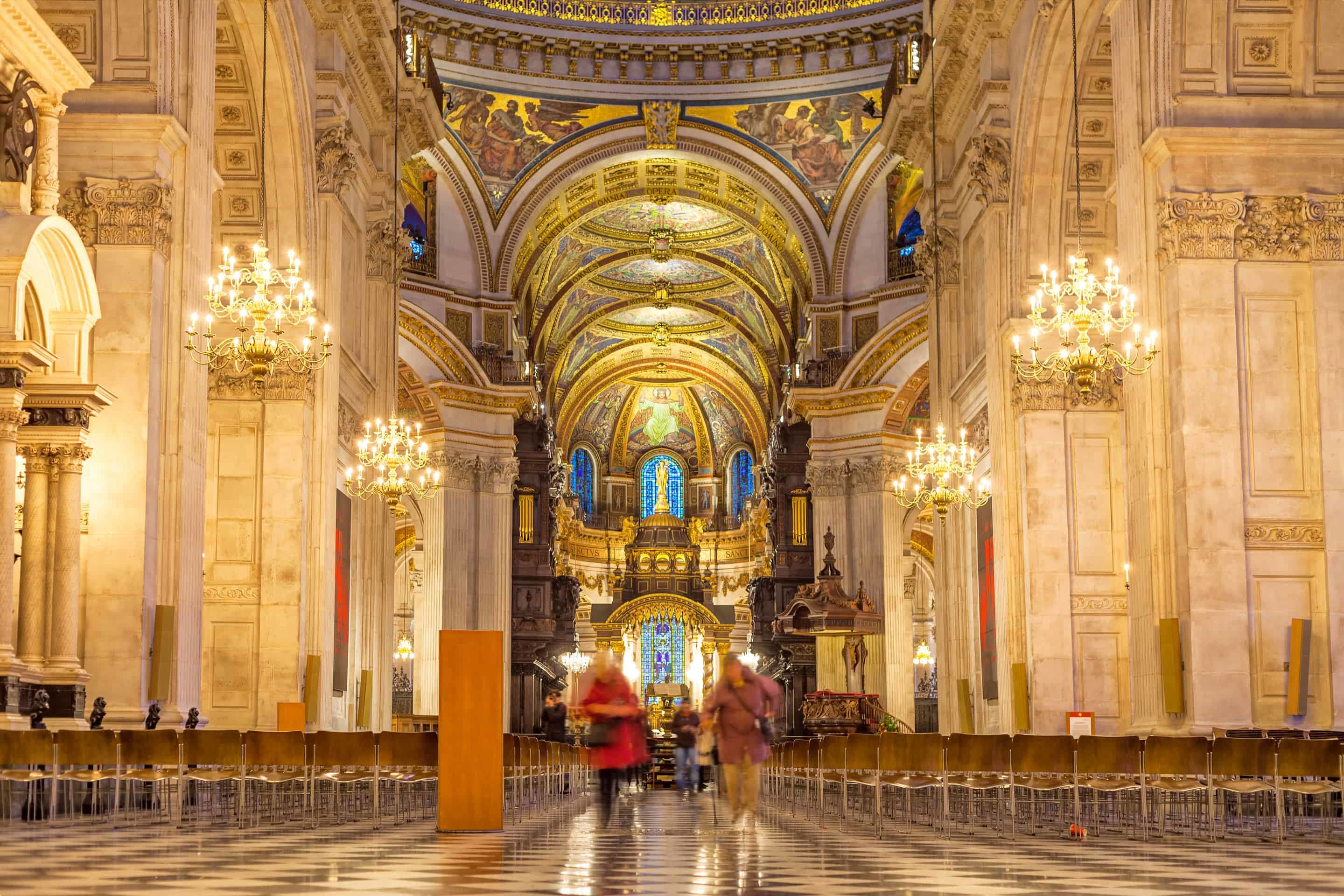
The cathedral took 35 years to build. In 1710, at the age of 78, Sir Christopher Wren saw his son raised in a basket to the summit of the dome to place the final stone. ‘If you seek his memorial, look around you’, reads his epitaph in the crypt of St. Paul’s Cathedral.
-
And its churchyard was once the largest school in England
St Paul’s adjoining churchyard was once home to St. Paul’s School, founded in 1509 by the Dean of St Paul’s. It gave free education to 153 pupils (the number of fishes caught by Peter in the ‘miraculous drought’ described in St. John’s Gospel), making in the largest school in England at the time. In the 19th century, the school moved to Hammersmith.
In 1606, Guy Fawkes and some of his conspirators were hung, drawn and quartered in the courtyard for plotting to blow up James I and Parliament.
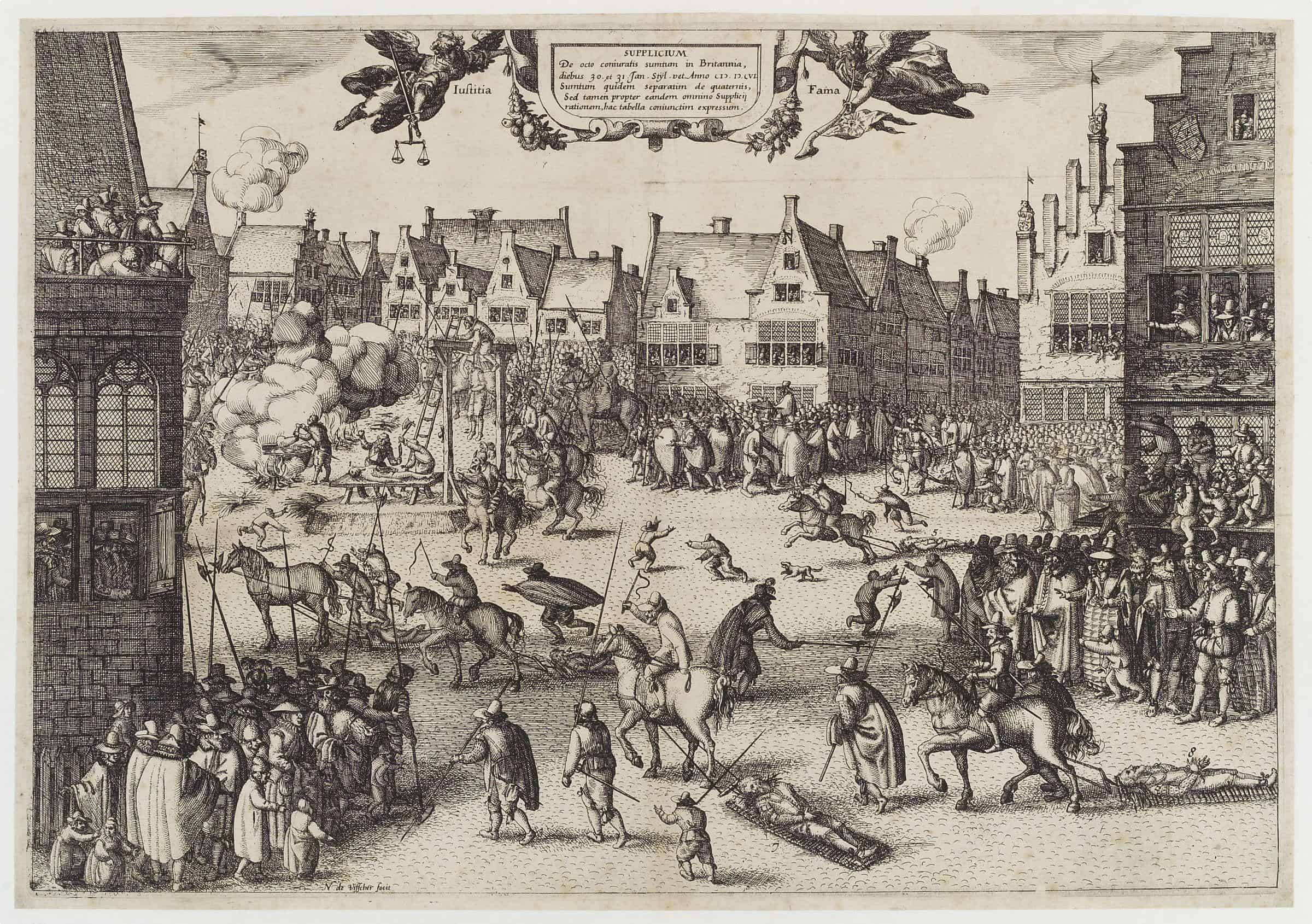
The churchyard was also home to a market for booksellers and publishers, including John Newberry, the first publisher of children’s books. The area was also home to a number of masonic lodges in the early 18th century. In 1717 four of these lodges met at the Goose and Gridiron to form the world’s first Grand Masonic Lodge.
-
Soho gave us communism and TV – and saved us from cholera
‘Soho’ takes its name from a battle cry used by the Duke of Monmouth (1649-1685), the illegitimate son of Charles II and his mistress Lucy Walter. Monmouth, a Protestant, led a rebellion to depose his uncle, the Catholic James II, and was executed for treason in 1685.
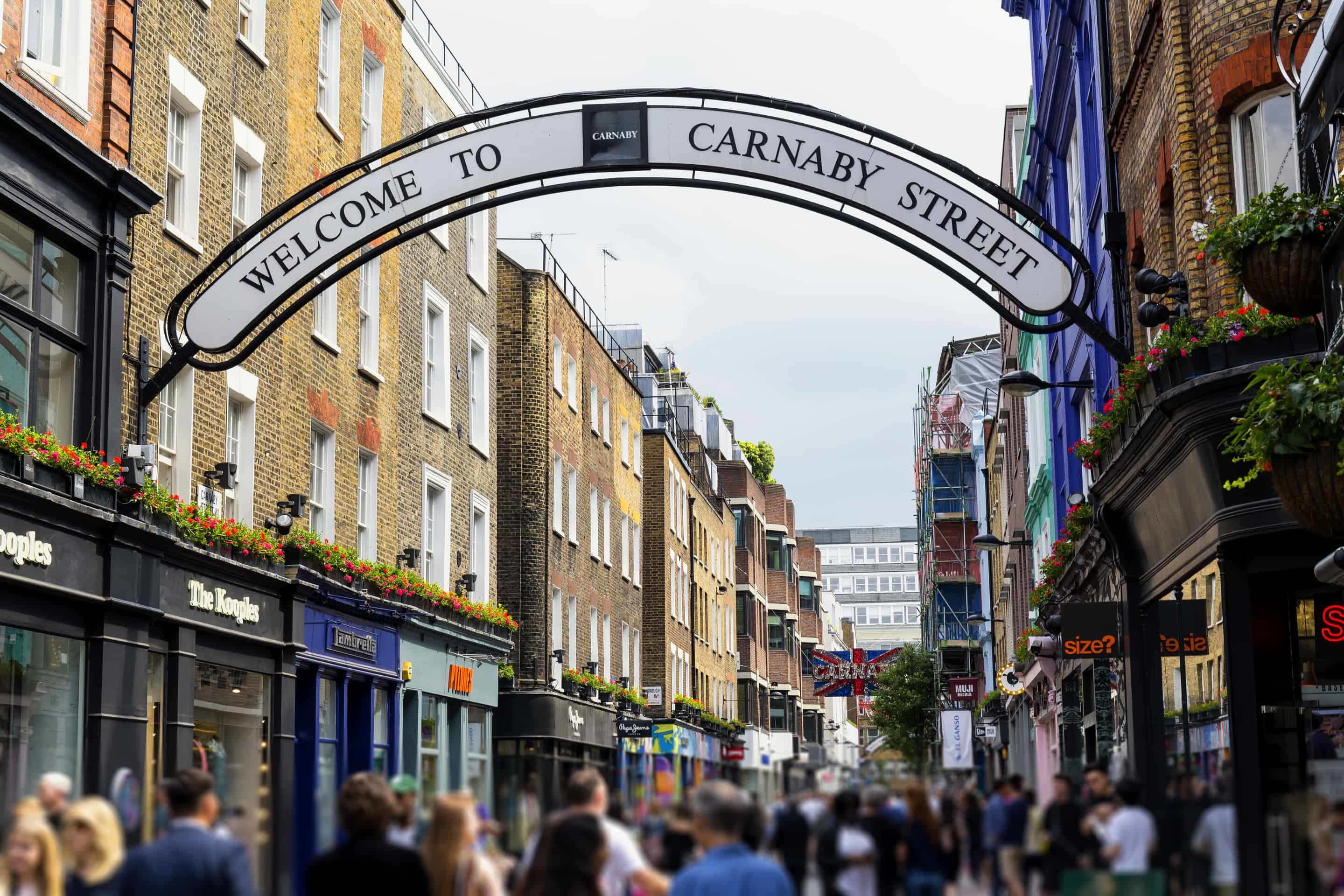
The neighbourhood has since played host to many important events in world history. The John Snow pub in Broadwick Street commemorates the surgeon who, in 1854, uncovered the link between victims of a cholera epidemic in Soho and those who drank from a well in Broadwick Street. Snow took samples from the well and discovered that the water contained infected particles. He convinced the local council to close the well, leading to a diminished spread of the disease. He had proven that cholera entered the body through the mouth rather than being airborne.
One resident of Soho who was lucky not to have drunk the contaminated water was Karl Marx, who lived on nearby Dean Street with his wife, Jenny, and their children through the 1850s. Having been expelled from Cologne due to his political activities, Marx fled to London. From his apartment in Dean Street, he walked each day to the British Library to research the text that would eventually become Das Kapital. The family was impoverished: they had no hot water or lavatory and three of their children would die of disease and malnutrition. Jenny begged for money from her uncle Lion Philips, one of the founders of the Philips Electronics Company, but she was refused because her uncle disapproved of Marx’s socialist activities.
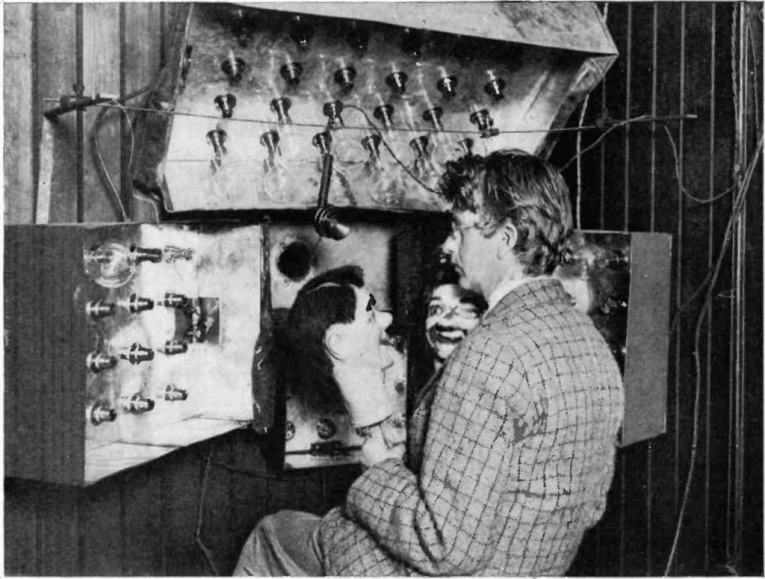
On 30 October 1925, Soho saw the development of the world’s first television transmission of a moving image. John Logie Baird, working in an attic at 22 Frith Street, was excited when a dummy’s head that he was using for a test suddenly appeared on the screen. He rushed downstairs and grabbed the first person he saw, a 15-year-old office boy named William Taynton. Baird gave Taynton half a crown, and Taynton posed in front of the transmitter, immortalising him as the first person to appear on TV.
Soho has also played an important role in British popular music. Louis Armstrong and Duke Ellington made their British debuts at the Palladium in Argyll Street, while London’s first discotheque, La Boubelle opened in 1959. Jimi Hendrix made his last ever public appearance at the Soho jazz club Ronnie Scott’s, in a jamming session with the jazz rock band War.
-
Piccadilly is home to the first welded steel building in London
When Alexander Simpson commissioned a store for his new range of men’s trousers, DAKS, he wanted it to be bright, ‘manly’, and – most importantly – modern. To do this, he hired the British architect Joseph Emberton, who created a cutting-edge building for the store, the first in London made from welded steel.
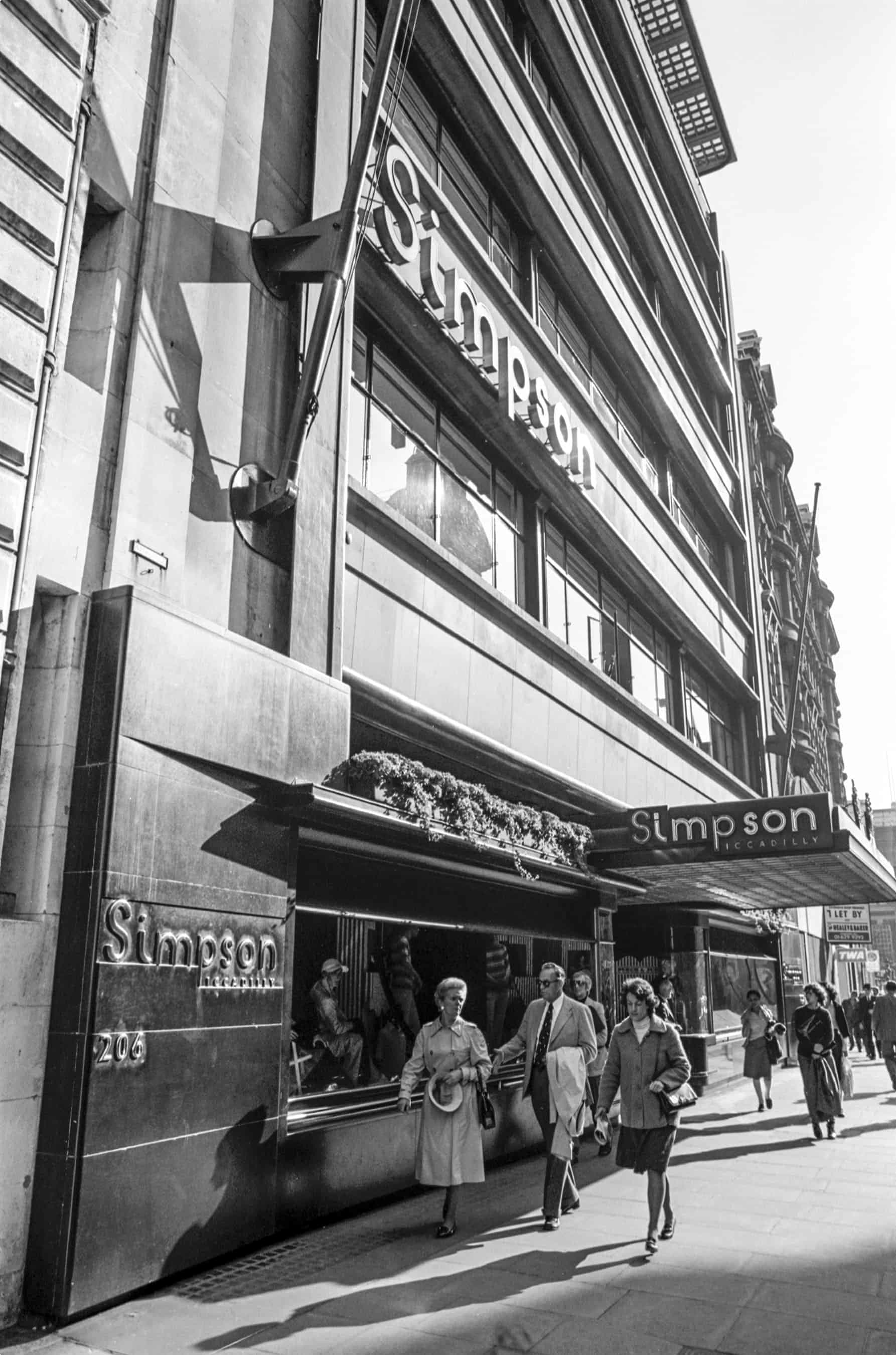
Simpson also hired the Bauhaus artist and designer, László Moholy-Nagy, for work on the store’s interior. Moholy-Nagy, born in Hungary, was invited to teach at Weimar’s Bauhaus School by its founder, Walter Gropius, in 1923. Moholy-Nagy strongly believed in the potential of art as a vehicle for social transformation, and recognised the importance of integrating technology with the arts. Like other Bauhaus artists, he worked across a number of mediums, including photography, painting, sculpture, and film.
The Nazi regime did not, however, approve of the modernist approach of the Bauhaus, and Moholy-Nagy, along with many of his fellow artists, fled from Germany. During his time in London, Moholy-Nagy designed the visual merchandising and displays for the shop, including in-store signage and window displays. Three aircraft, designed by Moholy-Nagy, were exhibited on the fifth floor – for no reason other than to attract customers with novelty. Sadly, Simpson’s is now closed and Moholy-Nagy’s work is long gone. Visitors can nonetheless still see Emberton’s modernist masterpiece, now a Waterstone’s bookshop.
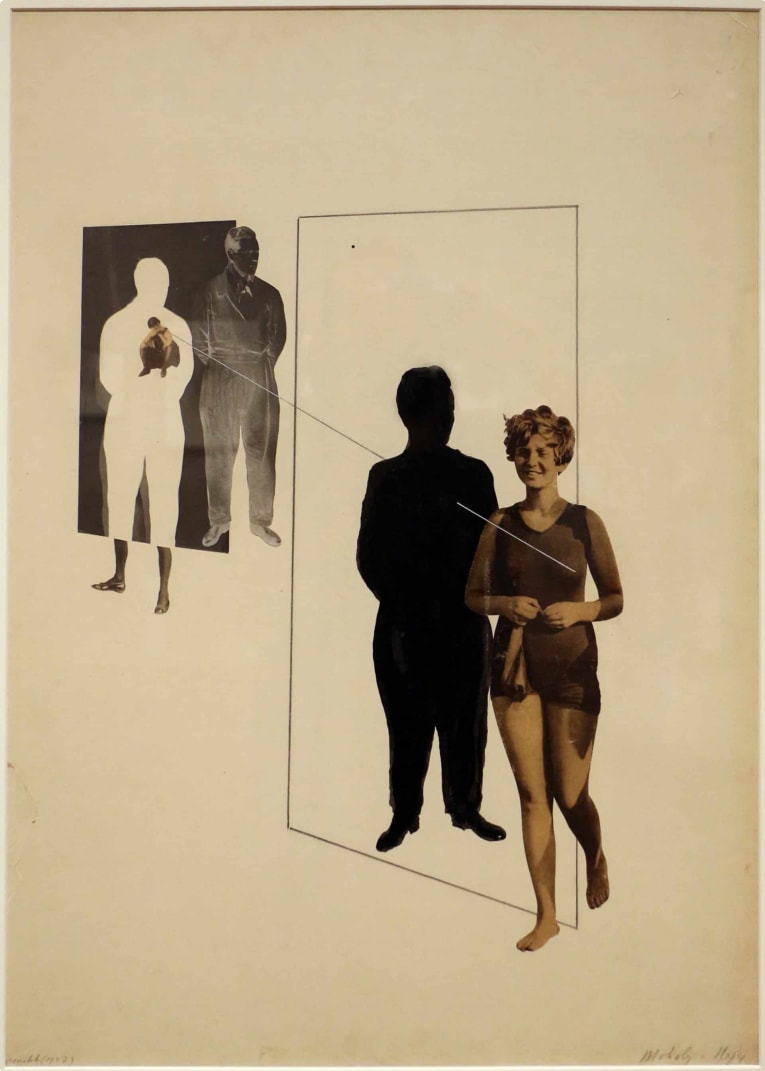
For more information about the Bauhaus movement, take a look at our article commemorating its 100th anniversary in 2019.
-
The Marble Arch is built with stone from Michelangelo’s quarry
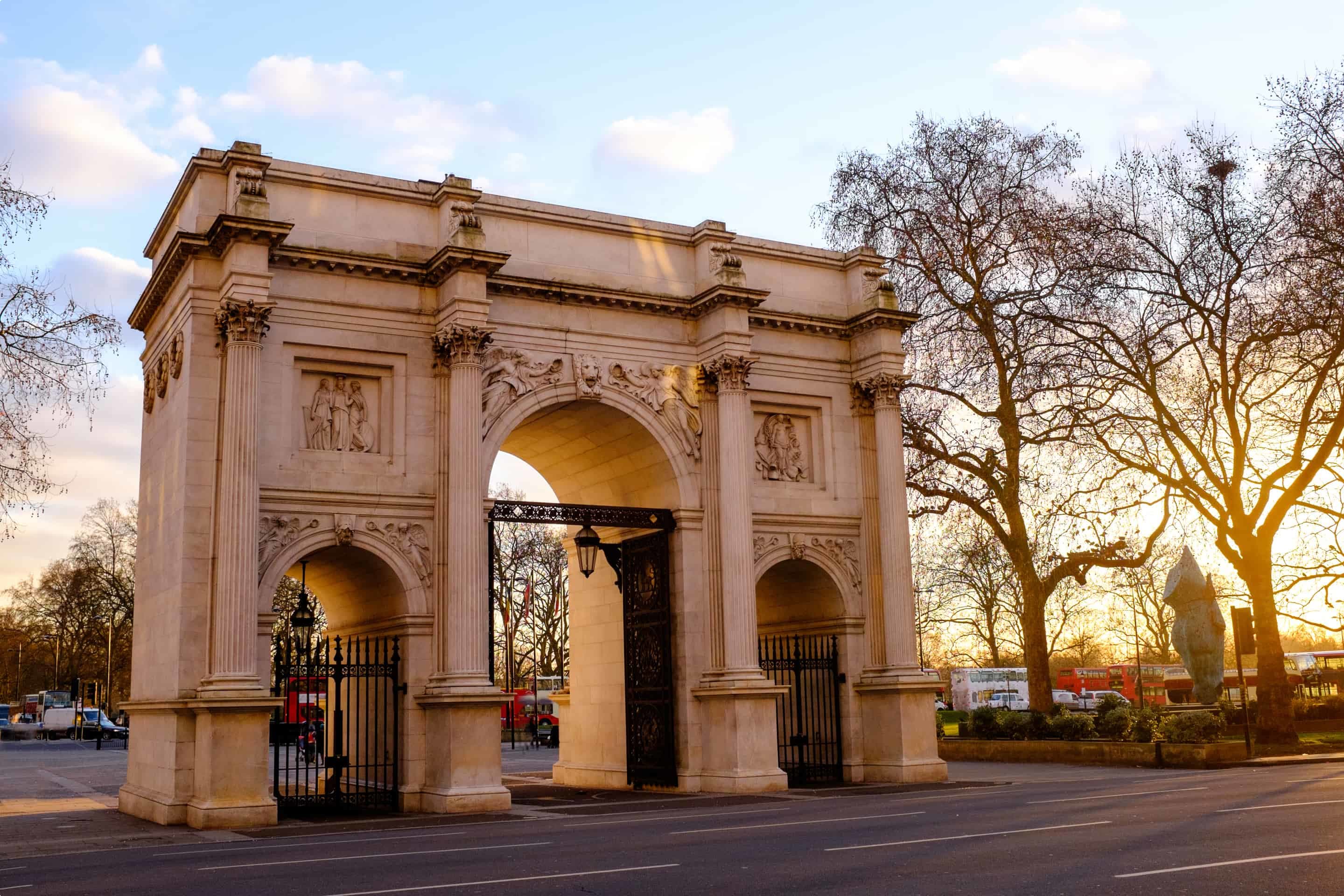
The Marble Arch, which sits on a large traffic island at the junction of Oxford Street, Park Lane and Edgeware Road, was designed by John Nash in 1827 as the main entrance to Buckingham Palace. The design is based off the Arc of Constantine in Rome and the Arc du Triomphe in Paris, and finished with marble taken from quarries in Carrara, Tuscany – which also provided marble for Michelangelo’s David and Pietà. The arch was moved in 1851 when Buckingham Palace was enlarged. Tradition holds that only members of the Royal Family and the King’s Troop Royal Horse Artillery may pass through the central arch.
-
Whitehall was the scene of the execution of Charles I
Though synonymous with the Civil Service and bureaucracy today, Whitehall was once a huge royal palace, where the Royal Court sat from the time of Henry VIII to William and Mary.

The only remaining part of the palace, which burnt in 1698, is the Banqueting House. Designed in 1622, it was the first purely Renaissance building in London. Inside is a glorious painted ceiling by Peter Paul Rubens, who was commissioned by Charles I to celebrate the wise rule of Stuart kings. Ironically, Charles’s rule wouldn’t prove so wise – and as a result, he was executed outside the Banqueting House in 1649.
-
Westminster Abbey is the largest and loftiest church in England
The first abbey built on the site of Westminster was built in 620, by Sebert, the King of the East Saxons. In 1050, Edward the Confessor pulled down the Saxon abbey and began to build his ‘minster’ to the ‘west’ of London – ‘westminster’. He had sworn to make a pilgrimage to the tomb of the Apostle Peter in Rome, but the Pope released him from his vow on the condition that he raise a great abbey to St. Peter. Edward determined to build the greatest abbey the world had ever seen.
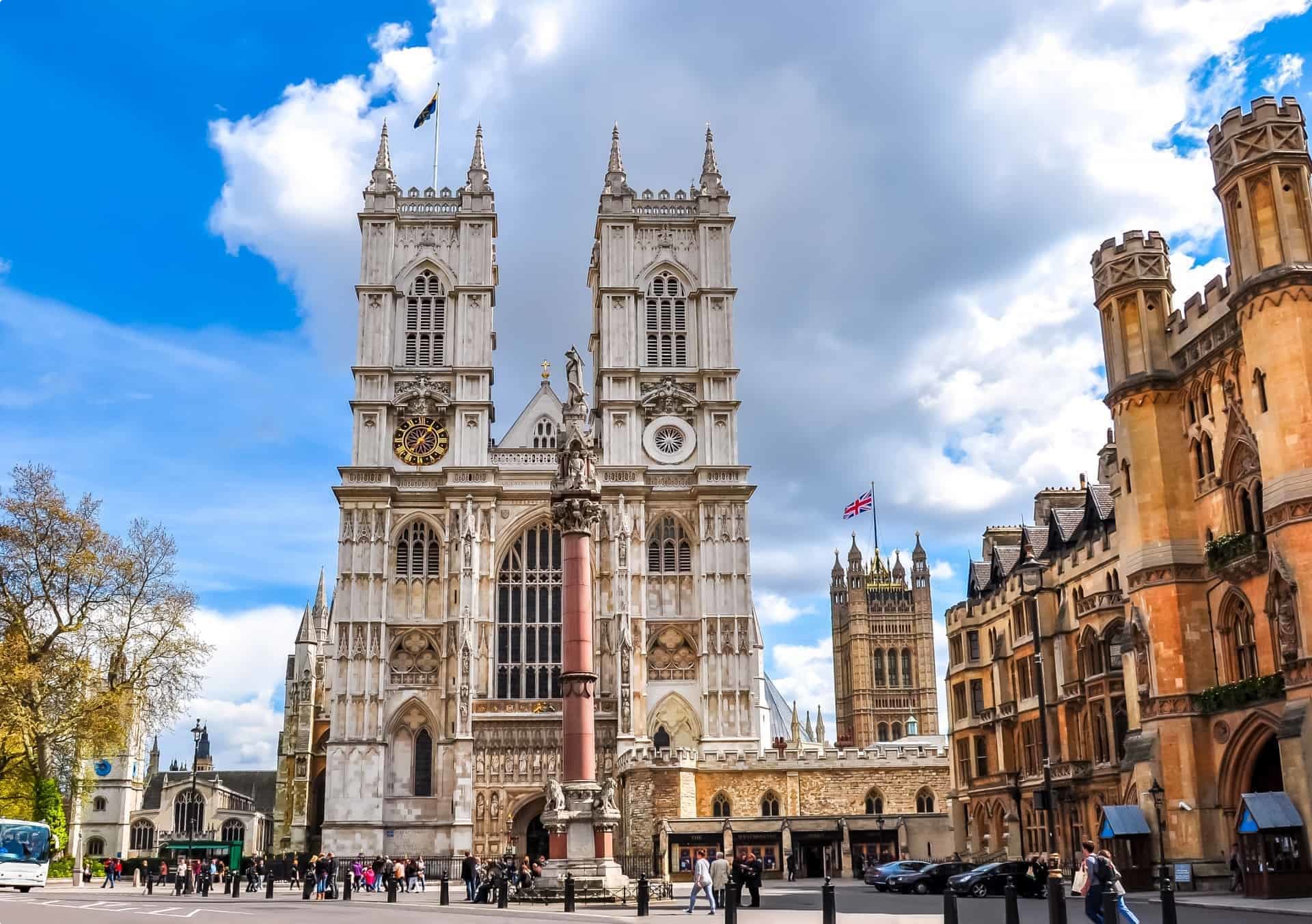
In 1066, William the Conqueror was crowned inside Edward’s abbey, setting a tradition that every subsequent monarch except Edward V (who was murdered in the tower before his coronation) and Edward VIII (who abdicated before his coronation) has followed.
Edward the Confessor was canonised in 1163 and Henry III honoured his memory by rebuilding the church in grand Gothic style. The church was built over the following three hundred years, with the west towers added by Nicholas Hawksmoor in the 18th century.
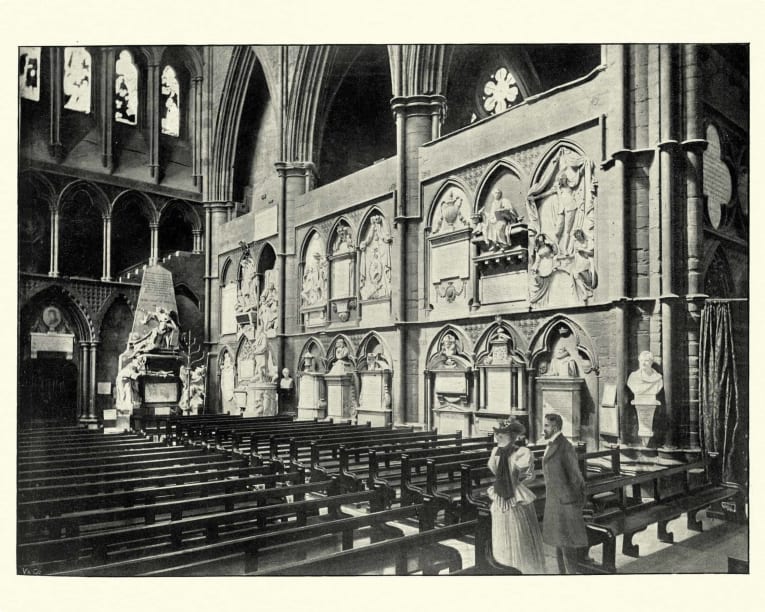
Inside the Abbey are more monuments than any other church in Britain. Between the reign of Henry III and George III most kings were buried in the Abbey. Though Geoffrey Chaucer was buried in the Abbey due to his position as Clerk of the Works of the Palace of Westminster, rather than his fame as a writer, tradition has been for Britain’s greatest writers – including Shakespeare, Charles Dickens, and Jane Austen – to be buried or memorialised close to Chaucer’s grave in what is known as ‘Poet’s Corner’.
-
London is home to the world’s oldest music hall
The East End neighbourhood of Whitechapel is home to Wilton’s Music Hall, the oldest surviving music hall in the world.
The theatre began as a small saloon at the back of a pub called the Prince of Denmark. In 1850, John Wilton bought the pub and expanded the saloon, naming it Wilton’s Music Hall. It proved so popular that Wilton bought the neighbouring properties and built a grand hall with space for up to 1500 people. It opened in 1859 and was called ‘the handsomest room in town’. Nevertheless, reflecting the character of the surrounding East End, it was a rough place. In one instance, a drunken heckler in the crowd was beaten to death by an actor – who was then sent to prison for only two weeks.
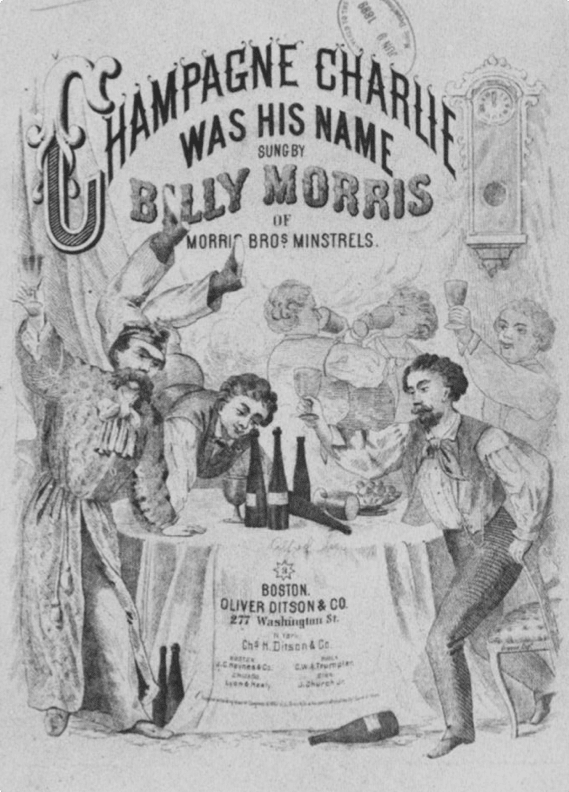
The music hall closed in 1880, and the space was subsequently used as a Methodist hall, which provided shelter for East Londoners during the 1936 Oswald Moseley March and the Blitz. The Salvation Army mission had little money, so the Victorian fittings remained virtually untouched through this period.
After the mission moved out in 1936, the hall was in danger of falling down until Sir John Betjeman and the British Music Hall Society stepped in to save it. Heritage listed, it survived various periods of demolition. Today Wilton’s is run by the Wilton’s Music Hall Trust, and puts on plays, operas, exhibitions and readings. In renovations, the owners only touched that which was strictly necessary for the hall to operate – meaning that, though the paint is peeling and the lighting is dim – the original Victorian trappings remain virtually all intact. Entering the theatre is like travelling back in time to Victorian London.
If this article has made you interested in visiting (or re-visiting) London, think about joining one of our many tours of England. We offer a variety of educational tours, devoted to history, literature, classical music and gardens.
Related Tours
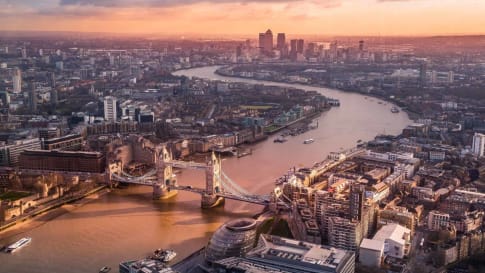
6 days
Apr, SepLondon Short Tour
Visiting England
A small group tour of London is a collection of day tours that visit and explore through the villages of the city. This escorted tour includes a journey out to Windsor castle. We explore Contemporary and learn about Roman Walled city, Medieval, Victorian London and the contemporary city today.
From A$6,995 AUD
View Tour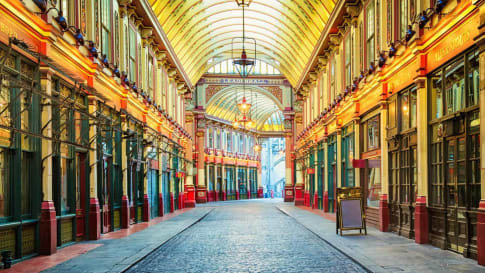
21 days
Jun, SepQueen Victoria's Great Britain: a small group tour
Visiting England, Scotland
A small group tour of England that explores the history of Victorian Britain. This escorted tour spends time knowledgeable local guides with travellers in key destinations in England and Scotland that shaped the British isles in this period including a collection of UNESCO world heritage locations.
From A$15,880 AUD
View Tour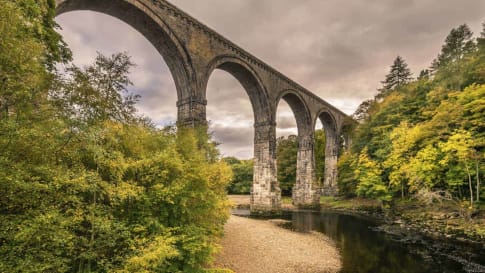
23 days
Oct, Apr, SepCanals and Railways in the Industrial Revolution Tour | Tours for Seniors in Britain
Visiting England, Scotland
A small group tour of Wales, Scotland & England that traces the history of the journey that is the Industrial revolution. Knowledgeable local guides and your tour leader share their history with you on this escorted tour including Glasgow, London, New Lanark & Manchester, Liverpool and the Lake district.
From A$16,225 AUD
View Tour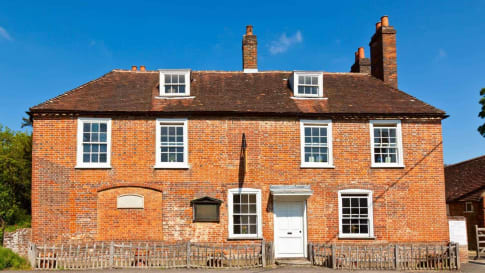
22 days
AugDiscovering the art and literature of England: Jane Austen, Shakespeare, and more
Visiting England
Stratford upon Avon, Shakespeares birthplace and Anne Hathaway's cottage as well as the Lake district a UNESCO World site and Dicken's London are part of guided tour for a small group tour of like minded people learning about the art and literature of England. Your tour leader and local guides share day tour itineraries to create a unique travel experience.
From A$17,765 AUD
View Tour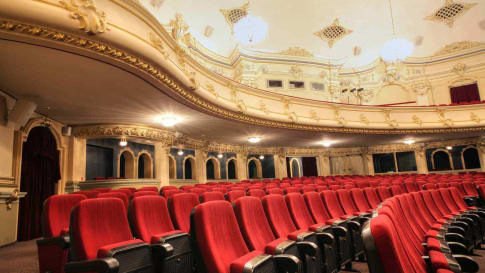
9 days
AugGilbert and Sullivan Festival Small Group tour
Visiting England
A 9 day tour with a tour director and local guide explore the Victorian music of Gilbert and Sullivan. We visit on this journey, Manchester, Harrogate, Oxford & London, attending the Gilbert & Sullivan festival and places of historic interest.
From A$8,910 AUD
View Tour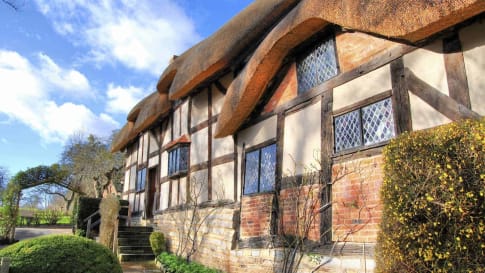
10 days
MayWorld of Shakespeare | Small Group Tour
Visiting England
This small group tour for mature couples and solo travellers visits Shakespeare's birthplace, Stratford upon Avon and Anne Hathaway's cottage all form part of this small group tour escorted by a tour director and local guides sharing their knowledge on this guided tour. Included are performances in London at the Globe & RSC in Shakespeare's Stratford upon Avon.
From A$7,950 AUD
View Tour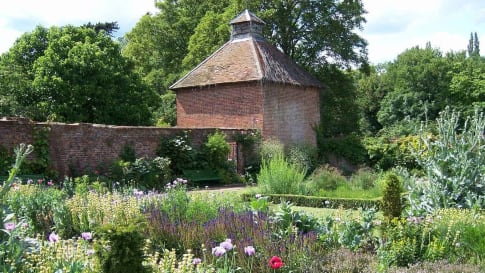
16 days
JunBritish Gardens Small Group Tour including Chatsworth RHS show
Visiting England, Scotland
From A$16,095 AUD
View TourRelated Articles
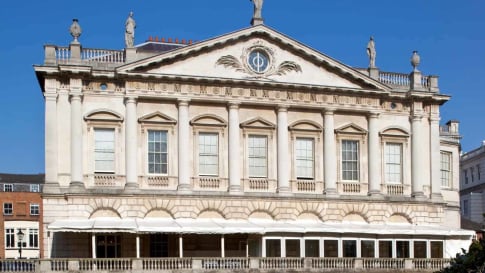
Georgian Style of Architecture: Definitive Guide for Seniors
Article to provide the senior couple or mature solo traveler with an appreciation of the influence of Georgian Architecture in Britain when on a small group educational tour.

Highlights of London
Article about London, capital of England. Supporting educational small group tours for senior couples and mature solo travellers to those interested in English history, culture and landscapes. Article shares insights about London.

Industrial Revolution. Britain's contribution to the world
Britain and the industrial revolution. A progressive period that spanned Queen Victoria's period. Small group package tours for mature and senior travellers explore this fascinating period of history across England and Scotland and key cities such as Manchester, Liverpool, Newcastle and Glasgow.

London's Victorian Architecture: The Definitive Guide for Travellers
Small group educational tours for senior couples and mature solo travelers with History tours including those examining the Industrial revolution, Victorian Britain the Gilbert and Sullivan era via the D'Oyle Carte family and the cities such as Glasgow, Liverpool and Manchester.

Markets of Victorian London
Article about the markets of London as part of a small group educational tour of England, Scotland and Wales as well as Europe. Collection of Articles about Victoria and her England including the industrial revolution for senior couples and mature solo travelers.
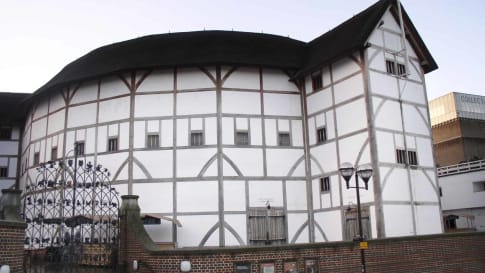
The Globe Theatre, London
Article about the Globe theatre and its place in London and Shakespeare's Stratford upon Avon. Stories and learning for senior couples and mature solo travelers on a small group tour.
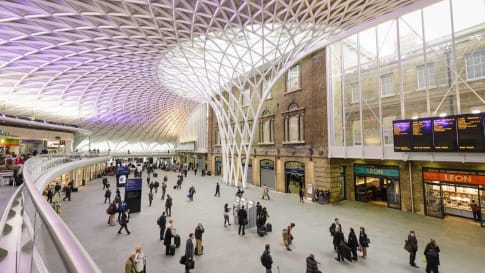
Underground London
London's underground railway network. Article foe senior couples and mature solo travellers joining a small group tour interested in learning about Victorian London and the evolution of the Tube network in the Industrial revolution.
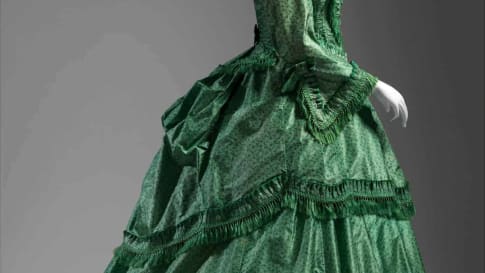
Victorian Women's Fashion: The Definitive Guide for Travellers
Article about Fashion including fabric and colour from Queen Victoria's. A period of personalities and progress change via the industrial revolution is examined for the senior couple and solo traveller seeking to learn more on a small group tour.
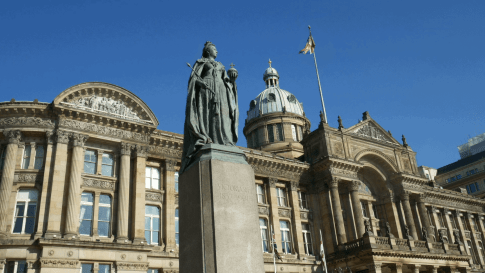
Queen Victoria's Britain: The Definitive Guide for Travellers
Article for educational small group tours of England for senior couples and mature single travellers. Queen Victoria, Britain's longest serving monarch through most of the Industrial revolution and rural life and the Empire is discussed in this article.
